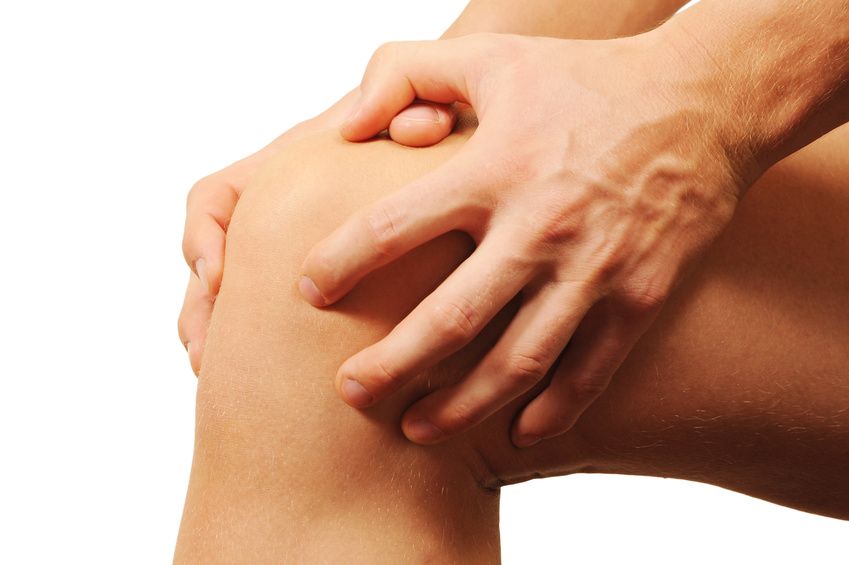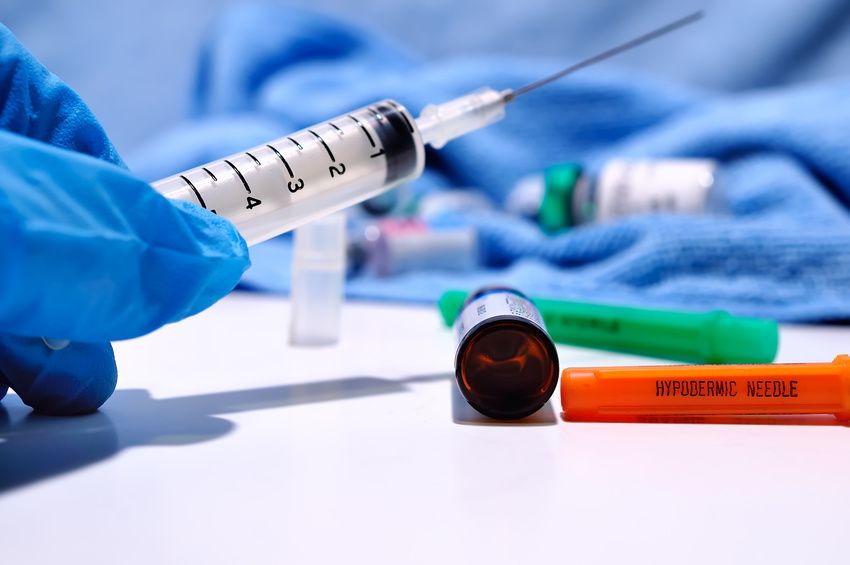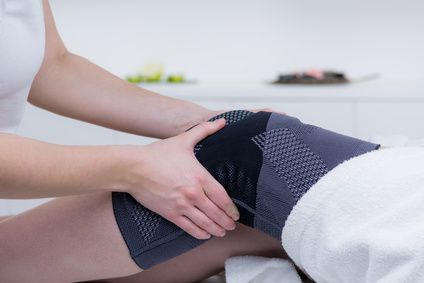In bursitis of the knee (ICD M70.5), a bursa in the knee joint becomes inflamed. This can happen in a number of places:
- In the area in front of the kneecap or
- On the inside and back of the knee joint.

Knee pain? There’s often a bursitis (inflammation of the bursa) behind it. © westfotos.de / Fotolia
In prepatellar bursitis, for example, the bursa in front of the kneecap is affected by the inflammation. Infrapatellar bursitis, on the other hand, is limited to the bursa located below the kneecap. There are also bursae in the back of the knee that can become inflamed.
A bursa, known in medical terminology as the synovial bursa, is a tissue sac filled with fluid. Bursae are always found where joints are subjected to particularly high stress. The structure serves as a buffer and reduces pressure and friction on the skin, muscles, bones, and tendons. While most of the approximately 150 bursae are quite insensitive, other joints are prone to bursitis. The knee joint is one of these susceptible joints.
.jpg)
Inflamed bursa below the kneecap (in the picture: side view) © Henrie / Fotolia
If the knee is subjected to pressure and/or greater (incorrect) stress over a longer period of time, then the bursa can become inflamed. Thus, bursitis is one of the typical reactions to overexertion of the knee joint. However, bursitis can also occur after falling on the kneecaps. Then bacteria can enter through an open wound, causing the bursa to become infected.
There are several risk factors for inflammation of the bursa in the knee. These include:
- One-sided physical work, such as laying tiles or working in the garden,
- Acute injuries caused by sports accidents or falls,
- Chronic joint diseases like osteoarthritis or arthritis,
- Sports activities that put a strain on the knees, such as surfing, tennis, or soccer.
In bursitis, swelling occurs at the affected area of the knee. The overlying skin reddens and the entire inflamed area is warm. Sufferers especially feel pain during movements that put strain on the inflamed structure. The mobility of the knee is often limited.
Depending on the location of the inflammation, specific symptoms may occur:
- In prepatellar bursitis, bending the knee is especially painful. The inflammation is manifested here by redness and swelling directly above the kneecap.
- In contrast, the area below the knee swells in infrapatellar bursitis. In addition to bending, hyperextension of the knee often causes pain in this form of bursitis.
A description of the symptoms and a visual examination of the knee are usually enough for a suspected diagnosis of "knee bursitis". Since the inflammation is often due to overexertion, the doctor also asks about stressful physical activities when talking to the patient. Likewise, the patient's occupation, sporting activities profile, and falls, injuries, or pre-existing conditions are of interest when going through the patient’s the medical history (anamnesis).
To confirm the diagnosis, the physician performs a physical exam following the anamnesis. In doing so, they pay particular attention to swelling, redness, or warmth in the area of the knee.
If a patient suffers more frequently from bursitis in the knee, further diagnostics may be required. For example, an X-ray examination can provide evidence of changes in the area of the knee joint and thus help to identify possible causative diseases. A blood test may be useful in case of suspected metabolic diseases such as gout or rheumatic conditions.
Bursitis in the knee is usually treated conservatively. The RICE rule provides the first steps in first aid:
- R - Rest. The knee joint needs time and rest until the inflammation subsides and is able to bear weight again.
- I - Ice cold pain relief by cooling the knee joint, for example with an ice pack (wrapped in a towel to make the cold more comfortable).
- C - Compression: light pressure reduces swelling.
- E - Elevation of the knee joint promotes blood flow and relieves swelling.
The affected knee joint should be cooled and given time to rest. Depending on the area of the inflammation, a special tape bandage for the knee may also alleviate symptoms; a doctor or physiotherapist will advise on this. Anti-inflammatory medications can be taken for the pain.
In the absence of open injuries, a specialist can puncture the bursa in the event of pronounced swelling with an unpleasant feeling of pressure in order to aspirate fluid with the aid of a syringe. Subsequently, they may also directly inject anti-inflammatory cortisone to combat the inflammatory reaction.

A puncture can relieve the knee in cases of prolonged bursitis. © ursule / Fotolia
However, it should be noted that making an injection into the knee joint is always associated with risks. In this way, bacteria can enter the bursa or the knee joint and aggravate the inflammation there. It is therefore particularly important that this is performed sterilely.
If the symptoms of inflammation persist for several weeks or if inflammation occurs repeatedly, chronic bursitis is present. If conservative treatment is not effective, the doctor may remove part or all of the affected bursa in surgery.
On the one hand, the progression and duration of bursitis depend on the cause and the severity and, on the other hand, on the treatment. As a rule, however, bursitis can be treated successfully and it accordingly heals quite quickly. In the case of mild inflammation, sick leave is usually not necessary, or at most only for a few days. A severe inflammation with the need for surgery, on the other hand, can mean the loss of several weeks.
Bursitis of the knee occurs mainly in people who have to kneel a lot due to their job. Likewise, sports activities that put a strain on the knee can lead to inflammation. However, with sufficient rest, you can counteract the inflammation so that the unpleasant pain usually subsides quickly.

Knee braces offer protection to prevent bursitis © Picture-Factory / Fotolia
Bursae protect the knee joint from excessive stress. As long as they are not inflamed, they perform their shock-absorbing task almost in secret. To protect the bursa and thus the knee joint, special knee pads or braces can be worn during high-exertion activities or sports that put a strain on the knee. Regular breaks and light mobilization through balancing knee movements keep the knee joint strong and healthy.









































.jpg)



